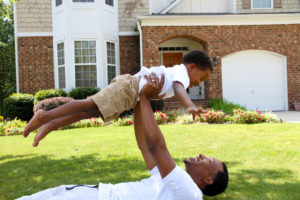Latest Posts
- Have a purpose when backyardingAugust 5 2021
- Study: Time outside alters our microbiomeAugust 4 2021
- Happy National Mutt Day from Mo-MoJuly 27 2021
- New home? Avoid these common mistakes in your yard.July 26 2021
- Infographic: Plan a backyard staycation this summerJuly 22 2021
Categories
Archive
August 14th
WHO issues new physical activity guidelines for young children

The World Health Organization (WHO) has released guidelines for the amount of time babies and young children should spend being physical active, in front of screens and sleeping. According to WHO, the guidelines were developed “using the best available evidence, expert consensus and consideration of values and preferences, acceptability, feasibility, equity and resource implications.” The guidelines were developed in collaboration with WHO’s Commission on Ending Childhood Obesity.
According to the recommendations, infants (less than one year) should get 30 minutes of physical activity, zero hours of screen time, and 12-17 hours of good quality sleep each day. For children 1-2 years of age, the physical activity recommendation jumps to 180 minutes, stays at zero minutes of screen time for one year olds, increases to no more than 60 minutes of screen time for two year olds, and includes 11-14 hours of good quality sleep each night. Children 3-4 years of age should spend at least 180 minutes in a variety of types of physical activities, 60 minutes of which is moderate to vigorous. Screen time stays at 60 minutes for this age group, and the sleep recommendation is 10-13 hours.
Getting more physically active is as easy as going outside to your own backyard. Spread a blanket on the grass and read a book, sing a song, or play with toys and puzzles if you have a baby at home. For toddlers, more active games like tag, hide-and-seek, playing in a kiddie pool (supervised, of course!) and even a simple backyard scavenger hunt are fun ways to get bodies moving and engage with the nature that starts in your own backyard.
Being outside and enjoying our living landscapes is not only good for our bodies, it is also good for our overall well-being. Being outside reduces stress, increases attention and improves memory. To learn more about the many benefits of our green spaces – including those right outside your backdoor – go to SaveLivingLandscapes.com.





